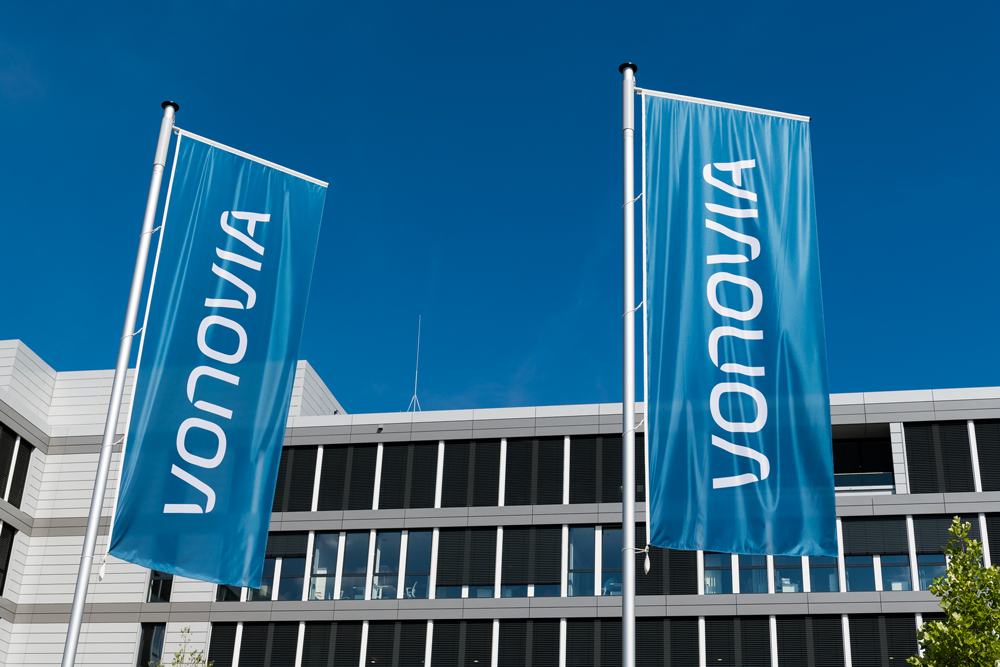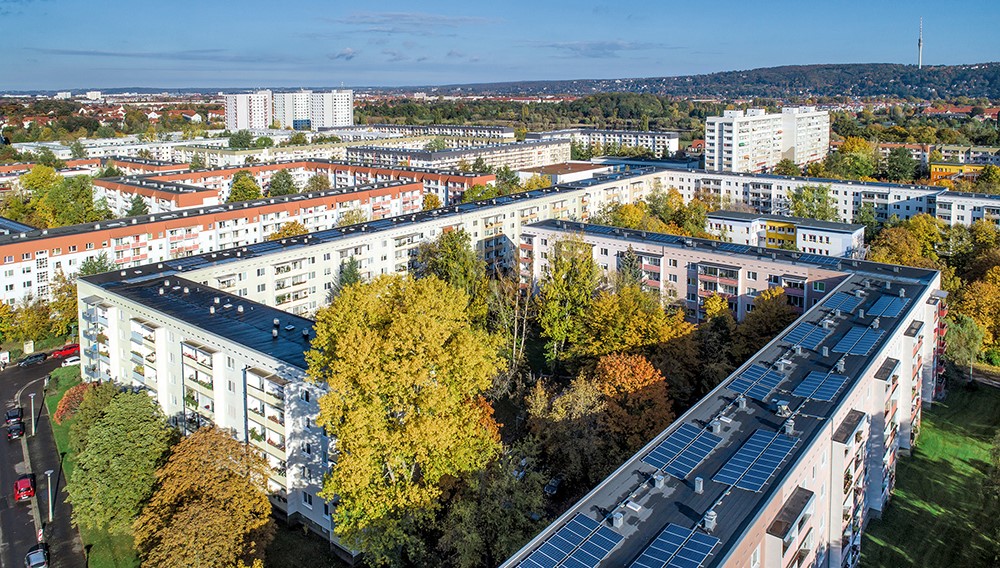Financing
According to the publication dated December 17, 2021 Vonovia’s credit rating as awarded by the agency Standard & Poor’s is unchanged at BBB+ with an outlook for the long-term issuer credit rating that has now been lifted from stable to positive and A-2 for the short-term corporate credit rating. At the same time, the credit rating for the issued and unsecured bonds is BBB+.
Vonovia received an A- investment grade rating from the rating agency Scope, which was most recently confirmed in a publication dated June 14, 2021.
In addition, Vonovia was awarded an A3 long-term issuer rating with a stable outlook by the rating agency Moody’s for the first time on May 31, 2021.
Vonovia SE has launched an EMTN program (European medium-term notes program). This program, which was originally launched via Vonovia Finance B.V., allows funds to be raised quickly at any time, without any major administrative outlay, using bond issues. The prospectus for the € 30 billion program, which was most recently supplemented on June 3, 2021 is to be updated annually and approved by the financial supervisory authority of the Grand Duchy of Luxembourg (CSSF).
As of the reporting date of December 31, 2021 Vonovia had placed a total bond volume of € 25.1 billion, € 24.9 billion of which relates to the EMTN program.
Via its Dutch subsidiary Vonovia Finance B.V., Vonovia issued an EMTN bond of € 500.0 million that runs until January 2041 with effect from January 28, 2021. The bond will bear interest at a rate of 1.00% p.a.
Berlin Hyp provided Vonovia Finance B.V. with secured financing of € 200.0 million with a term of ten years, with the agreement signed in December 2020 and the funds disbursed in February 2021.
Deutsche Pfandbriefbank issued Vonovia SE with a promissory note loan of € 100.0 million with a term of two years in March 2021.
On March 24, 2021 Vonovia SE issued a green bond with a total volume of € 600.0 million. The bond will bear interest at a rate of 0.625% and have a term of ten years.
Morgan Stanley, Société Générale and Bank of America provided Vonovia SE with bridge financing of up to € 20,150.0 million originally on August 5, 2021 with a term of up to two years as part of the acquisition of Deutsche Wohnen. It was drawn down in the amount of € 11,450.0 million and still had a value of around € 3,490.0 million as of December 31, 2021. This bridge financing was syndicated with 11 further banks.
Vonovia SE placed bonds with a total volume of € 4,000.0 million on June 16, 2021. The various tranches have terms of 3, 6, 8, 12 and 20 years and an average annual interest rate of 0.6875% p.a.
Vonovia SE placed bonds with a total volume of € 5,000.0 million on September 1, 2021. They have terms of 2, 4, 7, 11 and 30 years and an average annual interest rate of 0.49%.
A secured financing arrangement with bullet repayment worth around € 148.0 million was repaid in October 2021.
A bond in the amount of € 500.0 million issued in 2013 was also repaid in October 2021.
In December 2021, the perpetual hybrid bond raised in 2014 in the amount of € 1,000.0 million, which was reported as equity attributable to Vonovia’s hybrid capital investors, was terminated and repaid on the first possible repayment date.
Liabilities amounting to around SEK 2,800.0 million (around € 260.0 million) were repaid as scheduled in the Swedish subgroup in the 2021 fiscal year.
The debt maturity profile of Vonovia’s financing was as follows as of December 31, 2020:
Maturity Profile
In connection with the issue of unsecured bonds by Vonovia Finance B.V., Vonovia has undertaken to comply with the following standard market covenants:
- Limitations on incurrence of financial indebtedness
- Maintenance of consolidated coverage ratio
- Maintenance of total unencumbered assets
The existing structured and secured financing arrangements also require adherence to certain standard market covenants. Any failure to meet the agreed financial covenants could have a negative effect on the liquidity status.
The LTV (loan to value) is as follows as of the reporting date:
LTV (loan to value)
in € million | Dec. 31, 2020 | Dec. 31, 2021 | Change in % | |||
Non-derivative financial liabilities | 24,084.7 | 47,229.5 | 96.1 | |||
Foreign exchange rate effects | -18.9 | -36.1 | 91.0 | |||
Cash and cash equivalents | -613.3 | -1,932.4 | >100 | |||
Net debt | 23,452.5 | 45,261.0 | 93.0 | |||
Sales receivables | -122.3 | -69.9 | -42.8 | |||
Adjusted net debt | 23,330.2 | 45,191.1 | 93.7 | |||
Fair value of the real estate portfolio | 58,910.7 | 97,845.3 | 66.1 | |||
Loans to companies holding immovable property and land | – | 1,042.1 | – | |||
Shares in other real estate companies | 324.8 | 876.0 | >100 | |||
Adjusted fair value of the real estate portfolio | 59,235.5 | 99,763.4 | 68.4 | |||
LTV | 39.4% | 45.3% | 5.9 pp | |||
Taking account of the Berlin package sold to various municipal residential real estate companies in the federal state of Berlin, the pro forma LTV comes to 44.0%. The financial covenants have been fulfilled as of the reporting date.
LTV bond covenants
in € million | Dec. 31, 2020 | Dec. 31, 2021 | Change in % | |||
Non-derivative financial liabilities | 24,084.7 | 47,229.5 | 96.1 | |||
Total assets | 62,417.4 | 106,320.3 | 70.3 | |||
LTV bond covenants | 38.6% | 44.4% | 5.8 pp | |||



